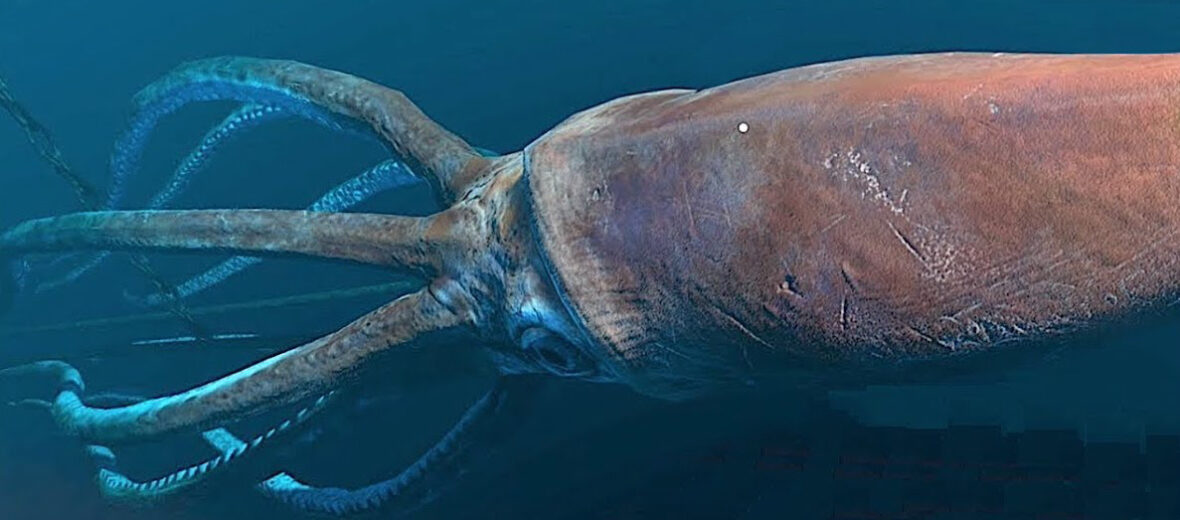
Not only is the giant squid the largest of all the cephalopods, it’s also the largest living invertebrate in the world! They can be found in the Northern parts of the Atlantic Ocean, the Gulf of Mexico, the Sea of Japan, the Bering Sea, Northern parts of the Pacific Ocean, Hawaii, California, and in the southern oceans. They are notoriously hard to study, due to the fact that they not only live in very deep waters, but also are very solitary animals. This article is on special request from my friend, Mike.
First the Stats…
Scientific name: Architeuthis
Weight: Up to 440 lbs.
Length: Up to 48 feet
Lifespan: Up to 5 years
Now on to the Facts!
1.) Unlike octopuses, squids have 8 arms, but also 2 tentacles, used for obtaining prey.
2.) They don’t have suckers, but rather spike-lined discs.
3.) Their eyes are the size of a Frisbees!
4.) Giant squids have a parrot beak shaped mouth that is used to crush open crustaceans.
5.) Male giant squids are smaller than females, making this species sexually dimorphic.
But wait, there’s more on the giant squid!
6.) They don’t have a traditional tongue. Rather, they have a radula. This contains 7 rows of denticles (sharp, toothy, backwards-pointing spikes).
7.) Like other cephalopods, these squids can regenerate lost limbs.
Did you know…?
Millions of these beasts get eaten by sperm whales each year!
8.) Just as in all other known squids, they have 3 hearts.
9.) The main prey items are shrimp, fish, and even other squids. Yep, they are cannibals, Clarice.
10.) Brains of these squids are doughnut shaped and their esophagus runs right through the middle of their brain.
But wait, there’s still more on the giant squid!
11.) In a sort of an unspoken communal relationship, giant squids and jellyfish use each other for survival. The jellyfish use bioluminescence to light their way. This attracts fish. The fish hunt the jellyfish. The giant squid hunts the fish. What’s gonna work? Teamwork!
12.) Just like other cephalopods, giant squids are able to release ink which hides their tracks and aids in its escape. Some deep sea squids even produce and release luminescent ink.
13.) Giant squids can be found thriving at crushing depths of 3,000 – 6,000 feet.
14.) Finally, their penises are nearly a yard long!
Now a Short Giant Squid Video!
Also, check out the Critter Science YouTube channel. Videos added frequently!
Want to suggest a critter for me to write about? Let me know here.



